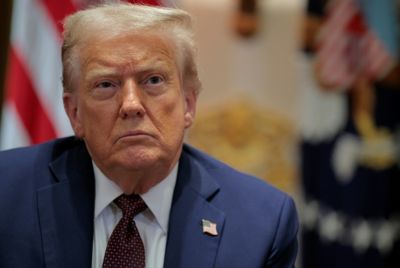China's Nuclear Arsenal Now Growing Faster Than Russia, US—SIPRI Reveals More Details
China has been adding 100 nuclear warheads annually since 2023!

Stockholm International Peace Research Institute (SIPRI) has warned that China is rapidly expanding its nuclear weapons stockpile at a pace surpassing both the United States and Russia.
In its latest annual report, the international think tank said the growth is fuelling fears of a new nuclear arms race as global arms control frameworks continue to erode.
China's Nuclear Growth Outpaces Global Superpowers
In the SIPRI Yearbook 2025, released on 16 June, the institute revealed that China has amassed at least 600 nuclear warheads—a dramatic rise from just 410 in 2023. According to the report, the country has been adding approximately 100 warheads per year since 2023.
'There is a dangerous new nuclear arms race unfolding,' the SIPRI report stated, highlighting how global disarmament efforts have stalled while rival powers modernise and expand their nuclear capabilities.
The US Department of Defense (DoD) had previously predicted this trajectory in its China Military Power Report, estimating that China could possess 1,000 operational warheads by 2030 if current trends persist.
Nuclear Gap Still Favouring US and Russia
Despite China's rapid build-up, it still trails the two largest nuclear powers by a wide margin. According to Interesting Engineering, the US holds 5,117 nuclear warheads, while Russia maintains 5,459, together accounting for roughly 90% of the world's total stockpile.
However, SIPRI cautioned that the potential for future parity remains a concern.
US President Donald Trump and Russian President Vladimir Putin have discussed plans to 'denuclearise' in the near future. If this proceeds while China continues expanding its nuclear arsenal, there is a significant chance that Beijing could eventually match their warhead stockpiles.
Are the US and Russia Fueling the Arms Race?
SIPRI experts also pointed to the actions of the US and Russia as potential drivers of this new arms race. Both countries significantly modernised their nuclear arsenals in 2024, introducing new models of intercontinental ballistic missiles (ICBMs) and upgrading existing systems.
Hans M. Kristensen, Senior Associate Fellow of SIPRI's Weapons of Mass Destruction Programme and Director of the Nuclear Information Project at the Federation of American Scientists, said the decades-long period of nuclear reductions is now firmly over.
'Instead, we see a clear trend of growing nuclear arsenals, sharpened nuclear rhetoric, and the abandonment of arms control agreements,' Kristensen warned.
Global Nuclear Tensions Escalating
China is not alone in its nuclear ambitions. SIPRI's yearbook also notes that North Korea now possesses around 50 nuclear warheads, while South Korea is nearing completion of a tactical nuclear weapons programme. Meanwhile, India has expanded its arsenal to an estimated 180 warheads.
As regional and global tensions rise, the prospect of a multilateral arms race looms larger. The weakening of international treaties and the failure of nuclear powers to recommit to disarmament have left a vacuum that is increasingly being filled by expansionist strategies.
With geopolitical rivalries hardening, SIPRI's latest findings sound an urgent alarm: the world may be entering a new and more complex nuclear era, where more players hold more weapons—and fewer restraints hold them back.
Aside from China, North Korea is also prioritising its nuclear programs and has assembled around 50 warheads. Meanwhile, South Korea is already in the final stages of tactical nuclear development. India is also increasing its nuclear arsenal, allowing it to have 180 warheads.
© Copyright IBTimes 2025. All rights reserved.





















